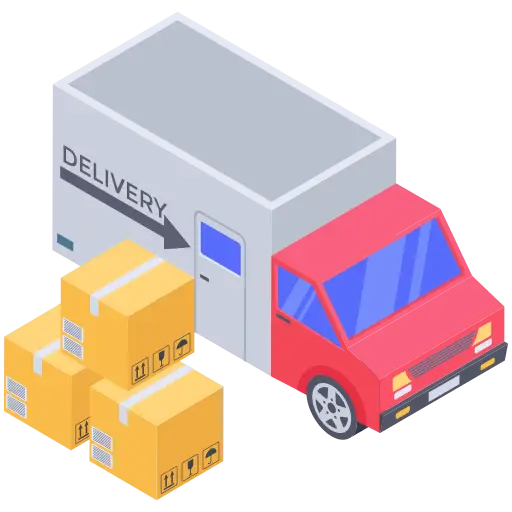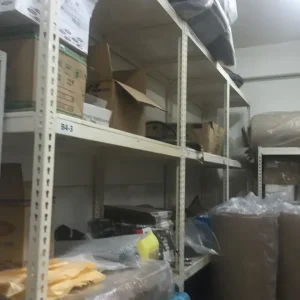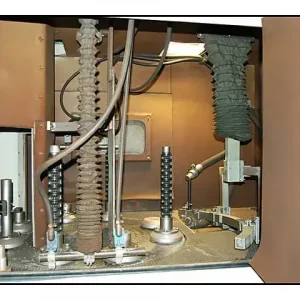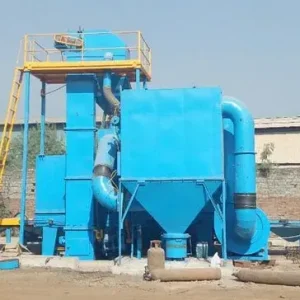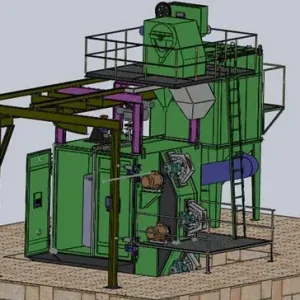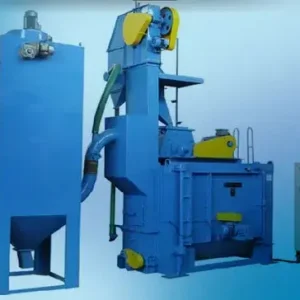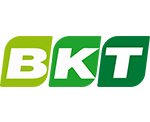How Leading Manufacturers are Reducing the Environmental Impact of Shot Blasting
The industrial sector increasingly prioritizes sustainability, and leading shot blasting machine manufacturers are innovating to reduce the environmental impact of their processes. By adopting eco-friendly practices and technologies, these manufacturers not only minimize environmental harm but also enhance operational efficiency and cost-effectiveness. Here’s how leading manufacturers like AeroWheel Surface Finishing, Wheelabrator, Rosler, Goff Inc., and Sinto America are spearheading these efforts:
1. Energy-Efficient Equipment Design
Description: Modern shot blasting machines are designed to consume less energy, reducing the overall carbon footprint.
- High-Efficiency Motors: Incorporating motors that use less power while delivering optimal performance.
- Variable Speed Drives (VSDs): Allowing for the adjustment of motor speed to match the specific requirements of each blasting task, thereby conserving energy.
- Energy Recovery Systems: Systems that capture and reuse energy generated during the blasting process.
Benefits:
- Lower energy consumption reduces operational costs.
- Decreased greenhouse gas emissions.
- Enhanced overall machine performance and longevity.
2. Advanced Dust Collection and Filtration Systems
Description: Efficient dust collection and filtration systems are critical for maintaining air quality and reducing environmental pollution.
- High-Efficiency Particulate Air (HEPA) Filters: Capturing fine dust particles to improve air quality.
- Cyclonic Separators: Enhancing dust collection efficiency by using centrifugal forces.
- Regular Maintenance: Ensuring dust collection systems are regularly serviced to maintain optimal performance.
Benefits:
- Reduced airborne contaminants and improved workplace safety.
- Minimized environmental impact through effective dust control.
- Compliance with stringent environmental regulations.
3. Recycling and Reusing Abrasive Media
Description: Effective management of abrasive media through recycling and reuse significantly conserves resources and reduces waste.
- Media Reclamation Systems: Collecting, cleaning, and recycling abrasive media for multiple uses.
- Separation Technologies: Using magnetic or vibratory separators to remove contaminants and extend media life.
- Optimized Media Usage: Adjusting media flow and blast parameters to maximize efficiency and reduce waste.
Benefits:
- Conservation of raw materials.
- Reduced waste generation and disposal needs.
- Lower operational costs through extended media life.
4. Environmentally Friendly Materials
Description: Using environmentally friendly materials in the construction and operation of shot blasting machines contributes to sustainability.
- Non-Toxic Abrasives: Promoting the use of non-toxic and biodegradable abrasive media.
- Eco-Friendly Coatings: Applying eco-friendly coatings and linings to machine components to enhance durability and reduce environmental impact.
- Sustainable Manufacturing: Adopting sustainable manufacturing practices to minimize resource consumption and waste generation.
Benefits:
- Reduced environmental impact of blasting operations.
- Enhanced operator safety and health.
- Support for sustainable manufacturing and production practices.
5. Water Conservation Techniques
Description: Implementing water conservation techniques in wet blasting operations helps in reducing water usage and preventing contamination.
Eco-Friendly Alternatives in Sand Blasting
Common Sand Blasting Defects and How to Avoid Them
Choosing the Right Shot Blasting Machine Manufacturer in India: Factors to Consider
- Closed-Loop Water Systems: Recycling water within the system to minimize waste.
- Efficient Water Filtration: Using advanced filtration systems to purify water for reuse.
- Waterless Technologies: Developing dry blasting techniques that eliminate the need for water.
Benefits:
- Conservation of water resources.
- Reduced risk of water contamination and runoff.
- Enhanced process efficiency and sustainability.
6. Sustainable Manufacturing Processes
Description: Shot blasting machine manufacturers adopt sustainable manufacturing processes to minimize environmental impact.
- Lean Manufacturing: Implementing lean manufacturing principles to reduce waste and optimize resource use.
- Renewable Energy: Utilizing renewable energy sources, such as solar or wind power, in manufacturing facilities.
- Waste Management: Comprehensive waste management practices to recycle and dispose of materials responsibly.
Benefits:
- Lower environmental footprint of manufacturing operations.
- Reduced manufacturing costs and enhanced sustainability.
- Support for corporate social responsibility (CSR) initiatives.
7. Lifecycle Assessment and Eco-Design
Description: Conducting lifecycle assessments and integrating eco-design principles ensure that environmental considerations are incorporated throughout the product lifecycle.
- Lifecycle Assessment (LCA): Evaluating the environmental impact of the machine from production to disposal.
- Eco-Design Principles: Designing products to reduce environmental impact and improve efficiency.
- End-of-Life Management: Planning for responsible disposal and recycling of machine components.
Benefits:
- Comprehensive understanding of the machine’s environmental impact.
- Development of more sustainable and efficient products.
- Enhanced brand reputation and customer trust.
Conclusion
Leading shot blasting machine manufacturers are making significant strides in reducing the environmental impact of their operations. By focusing on energy efficiency, advanced dust collection, abrasive media recycling, environmentally friendly materials, water conservation, sustainable manufacturing processes, and lifecycle assessment, these companies are setting new standards for sustainability in the industry. Manufacturers like AeroWheel Surface Finishing, Wheelabrator, Rosler, Goff Inc., and Sinto America are at the forefront of this movement, demonstrating that it is possible to achieve high-performance surface treatment while minimizing environmental impact and promoting eco-friendly practices.


